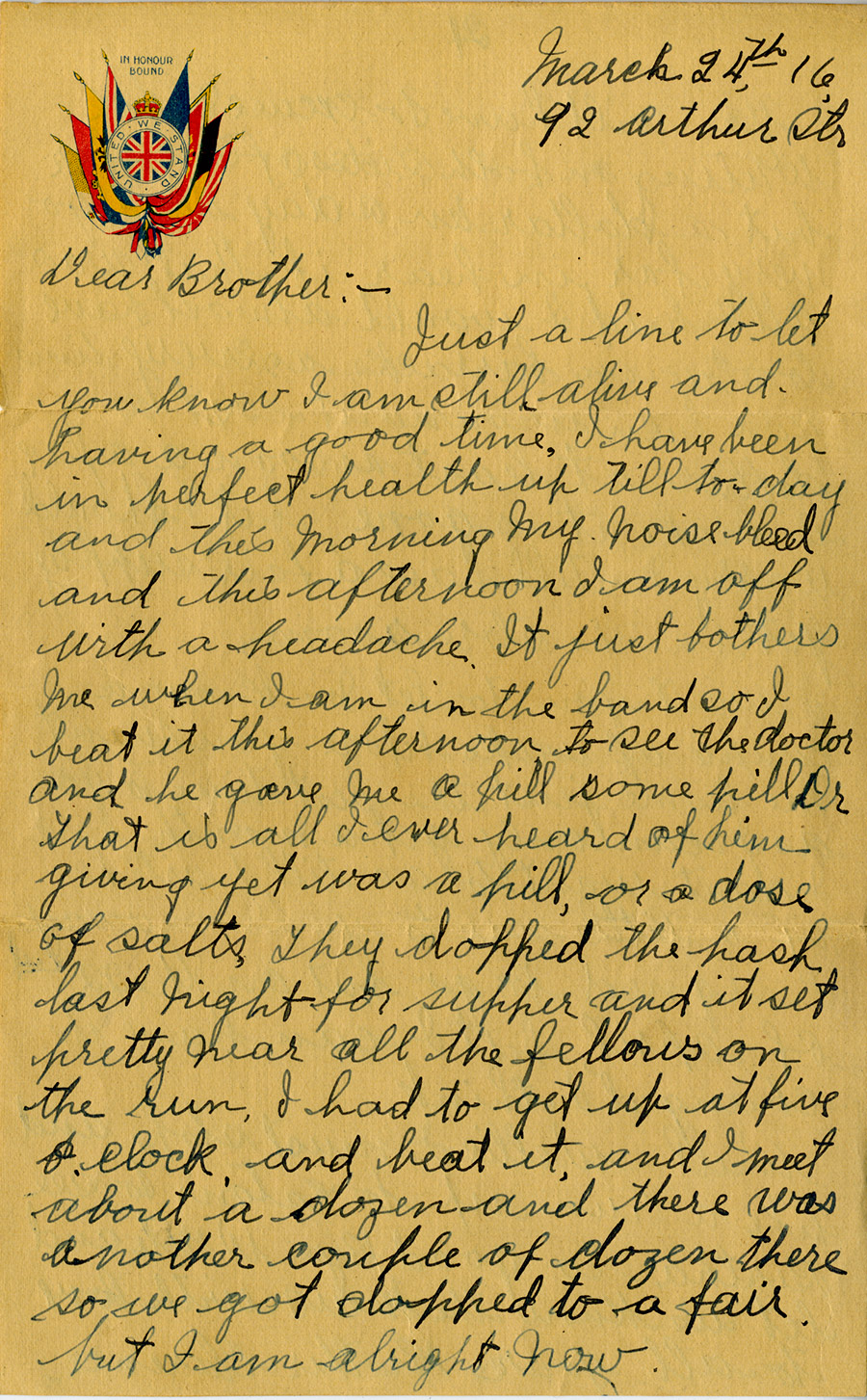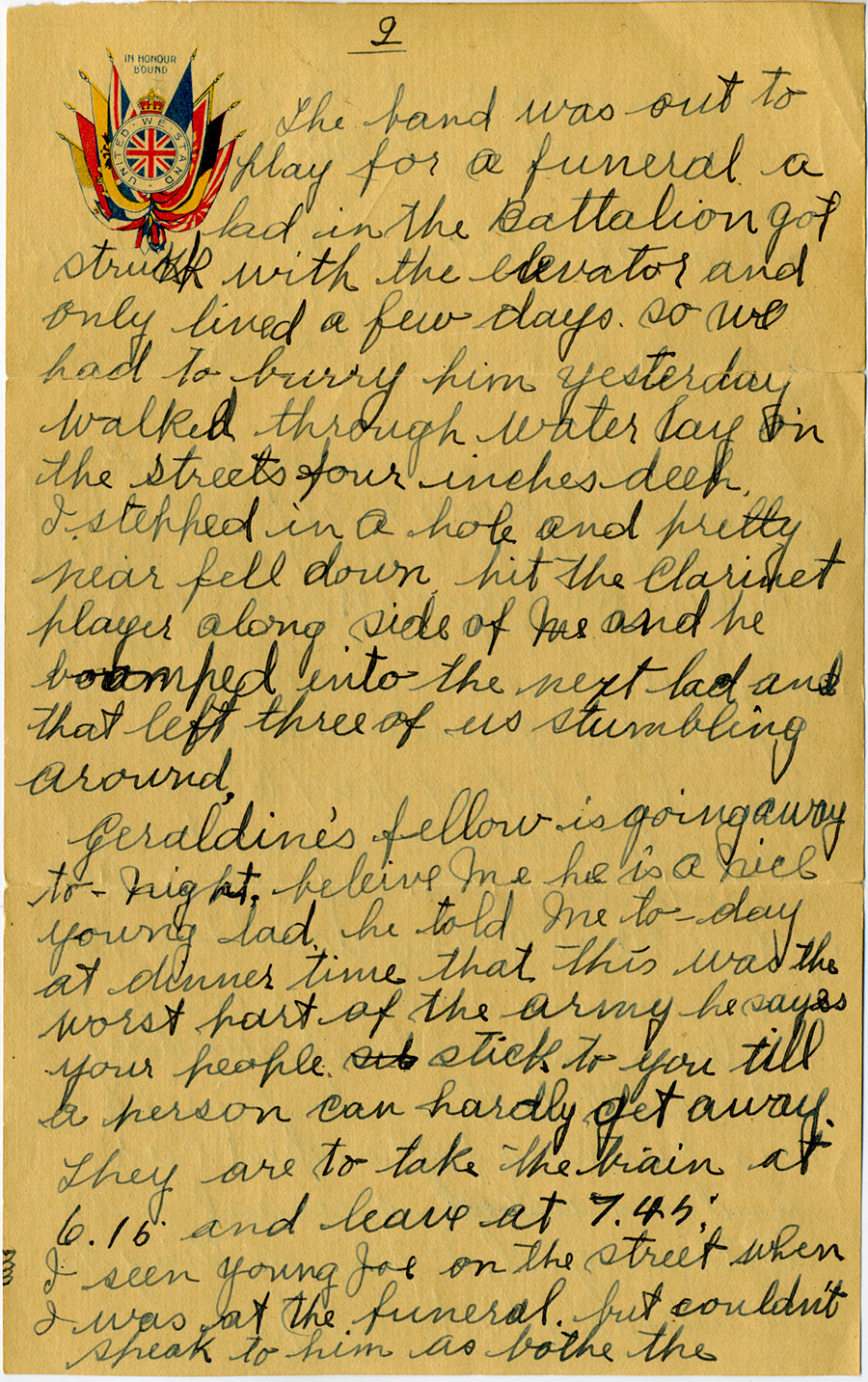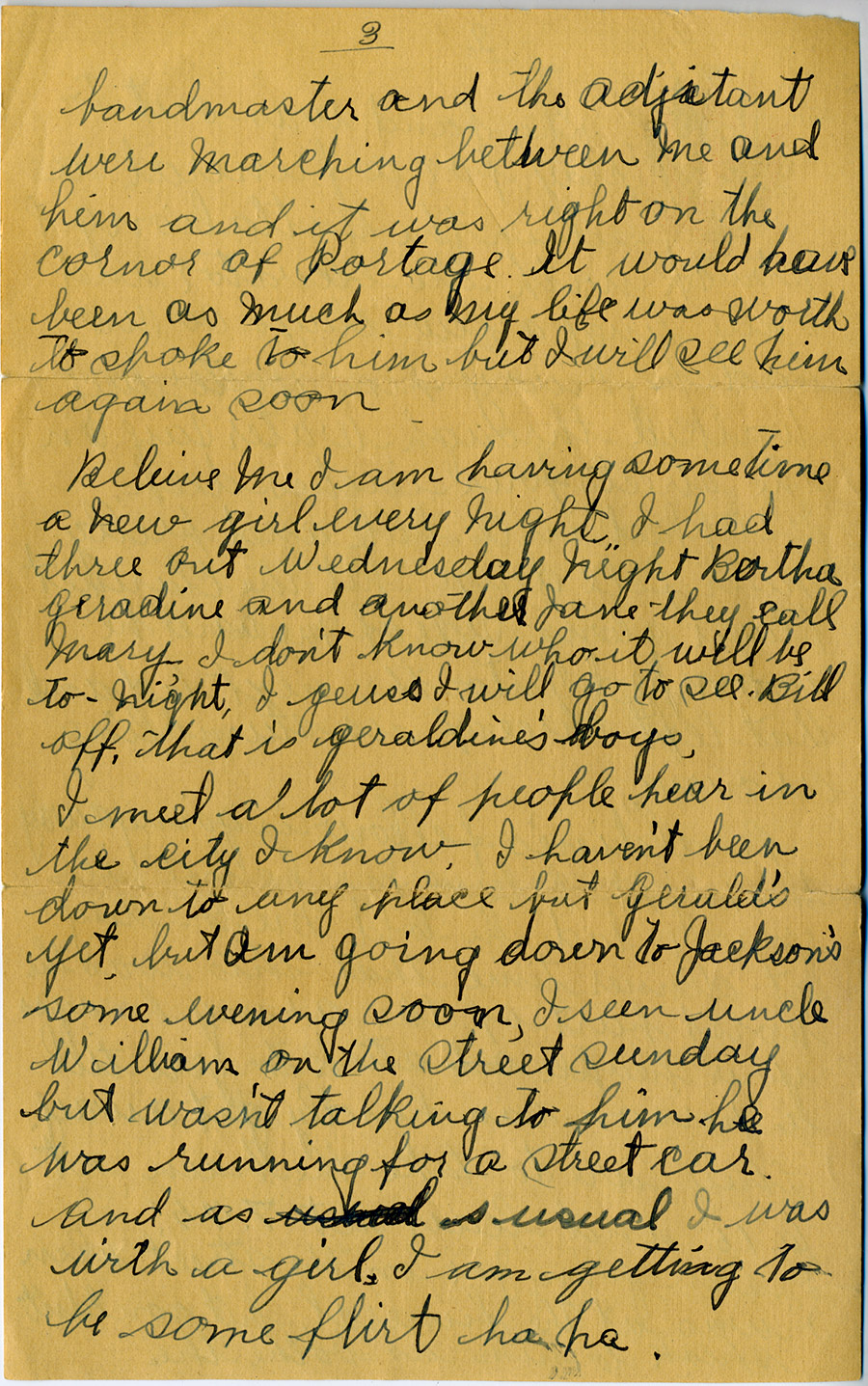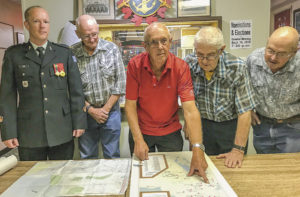
Northern Manitoba lake named for Private Clarence Hicks
BY KIM LANGEN
A century after his wartime death in the trenches of No Man’s Land in France, in 1917, the name of a local farm boy has been immortalized with the naming of a lake in his memory.
For Private Clarence W. Hicks, who was born on April 27, 1894, in Ninga, it was actually the second time his name had been celebrated.
The first time was when his nephew, Stan Clarence Hicks, now 76 and living in Killarney, was christened with his late uncle’s name.
And Stan himself was the driving force, when he recently set out to have his uncle’s name once again blessed by water, after asking the Manitoba government to name a northern lake after Uncle Clarence for his service to his country.
“I read in the paper around five or six years ago that they were naming lakes for deceased service men,” said Stan Hicks. “I decided to write to someone about it, because I wanted to name a lake after my uncle, Clarence Wilfred Hicks.”
He quickly heard back that his application was received, he said, but years would pass before his dream came true.
“They replied right away, that they now had it on file, and then I waited three or four years,” said Hicks. “Then I got a letter last December in the mail, telling us that there was now a lake named after him.”
The envelope containing the letter, sent by the Minister of Sustainable Development, Rochelle Squires, from Winnipeg’s Legislative Building, also included a special certificate that formally recorded the name of Clarence Hicks Lake.
“This geographical feature was named in honour of your uncle, Pte. Clarence W. Hicks, on November 22, 2017,” wrote Squires. “The Geographical Names Board of Canada has, for some years, honoured service personnel who gave their lives during a World War.
“I feel it fitting that next-of-kin should receive tangible evidence in the form of this certificate,” she continued. “I share with you and all Manitobans the lasting recognition which this geographical name will give to one who made the supreme sacrifice, so that we may continue to live in peace and human dignity.”
The quiet, isolated lake, now christened Clarence Hicks Lake, is located 30 to 35 kilometres southeast of Lynn Lake, and north of Flin Flon.
But it has no road leading to it, said Stan Hicks.
You would need to fly in, or over it, he said, and maybe one day he will make that trip.
For now he is just celebrating the fact it exists.
“I didn’t know my uncle,” said Hicks. “From what I heard he was just a happy guy. I know he wasn’t very tall, around 5’ 5’’, and that he had blue eyes and fair hair. He was the third oldest in a family of eight children, he was a bachelor, and his father, my grandfather, was Joseph Hicks, who homesteaded in Ninga in 1884.”
The family farm at Ninga kept the parents and children busy back in those early days, said Stan Hicks.
“They had horses, and thrashing machines, beef cattle, grain, and hogs,” he said. “There was a butcher shop in Ninga that my grandfather owned, and he helped supply it with his own beef and pork from the farm.”
Clarence Hicks, then in his twenties, made the decision to leave the farm in early 1916 in order to join the war effort, said his nephew.
Hicks lined up for his Army medical exam in Winnipeg, on Valentine’s Day, February 14, citing his occupation as Farmer.
Private Clarence Hicks was first enlisted with the 100th Battalion, and then transferred to the 107th Battalion, part of the Canadian Pioneers Battalion division, according to records.
On September 18, 1916, the 22-year-old sailed overseas with fellow Canadian troops, on the S.S. Olympic, heading out from Halifax enroute to Europe.
But in less than a year, the young private would be reported killed in action, while working with other members of the 107th Battalion to secure communications in the trenches of No Man’s Land – the narrow, wasted zone that lay under heavy fire between Allied-controlled ground and the German front line.
“He was killed at the battle for Hill 70, near Vimy, on August 17, 1917,” said Stan Hicks, who has been researching his uncle for years. “He is buried at Loos-en-Gohelle, in a British military gravesite. It was my lifelong dream to visit his gravesite, and I accomplished this in 2009. We don’t know, but we suspect that Clarence was also in the Vimy Ridge battle of April 9 to 14, 1917.”
Stan Hicks managed to ferret out the archived War Diary and Intelligence Summary for the 107th Battalion during the days before his uncle perished, and the story it reveals is matter-of-fact, yet poignant.
The weather on August 13, 2017, was reported to be dull.
“Two O. Ranks wounded,” wrote Lieutenant Campbell, the battalion commander, that day. “Progress made to MAROC.”
The following day, with fair weather, the battalion was resting, he reported, pending operations.
On August 15, as showers began to fall, Lt. Campbell related more extensive events which unfolded that day.
“In the operations on this date, the 107th Battalion was employed on constructing trenches across NO MAN’S LAND and keeping the roads and Light tramways in repair in the 1st Division,” he wrote.
‘A’ Company, which consisted of seven officers and 188 ‘O’ Ranks, had proceeded into English Alley, and at around 11 a.m. the soldiers commenced construction of communication trenches across No Man’s Land, he continued.
“The other party, under Major Warren, extended RAILWAY ALLEY to the German Front Line,” he wrote. “’B’ Company had roads and light tramway in their care, and did excellent work keeping roads and railway open for transmission of wounded and supplies. Five officers and 135 O. Ranks were detailed for this work.”
Meanwhile, the soldiers in ‘D’ Company had been divided up into two parties, and had succeeded in completing one communication trench, and had begun starting work on a second one, spanning their way across No Man’s Land.
“Work was commenced about 7:30 a.m., and continued until 2 p.m.,” wrote Campbell. “At night a party from this Company were carrying wire up to Blue Line under Capt. Henning.”
The soldiers had toiled throughout this long day in very dangerous conditions, he added.
“All of the above work was carried on under heavy hostile shell fire during (the) advance of 1stDivision east of Loos,” he said.
Stan Hicks does not know exactly where and how his uncle perished that week, only that he was reported ‘Killed in Action’ in the field, in France, on August 17, 1917.
In 2009 he and his wife Mildred Richard were able to visit the Canadian War Memorial in Vimy, France.
“It was a lifelong dream to visit his gravesite,” said Stan Hicks. “My wife’s father, Telesphore Richard, was also part of the Vimy Ridge battle, and he returned from the war with minor injuries. The visit was extra special for both of us.”
Hicks said he was christened with the first name of ‘Stanley’ after a different uncle, thus giving him a connection to the Second World War as well.
“I was also named for a second uncle, Stanley Hammond, who fought in World War II, but he came back alive,” said Stan Hicks. “He served with Laverne Tuft, who lives in Killarney. I was named after two uncles.”
Hicks said he hopes that one day he might manage to dip his toes in the remote Clarence Hicks Lake.
“I’m going fishing next summer, near the lake,” he said. “It’s a fly-in trip, and I plan to include a fly-over of Clarence Hicks Lake – possibly even a landing with the float plane.”
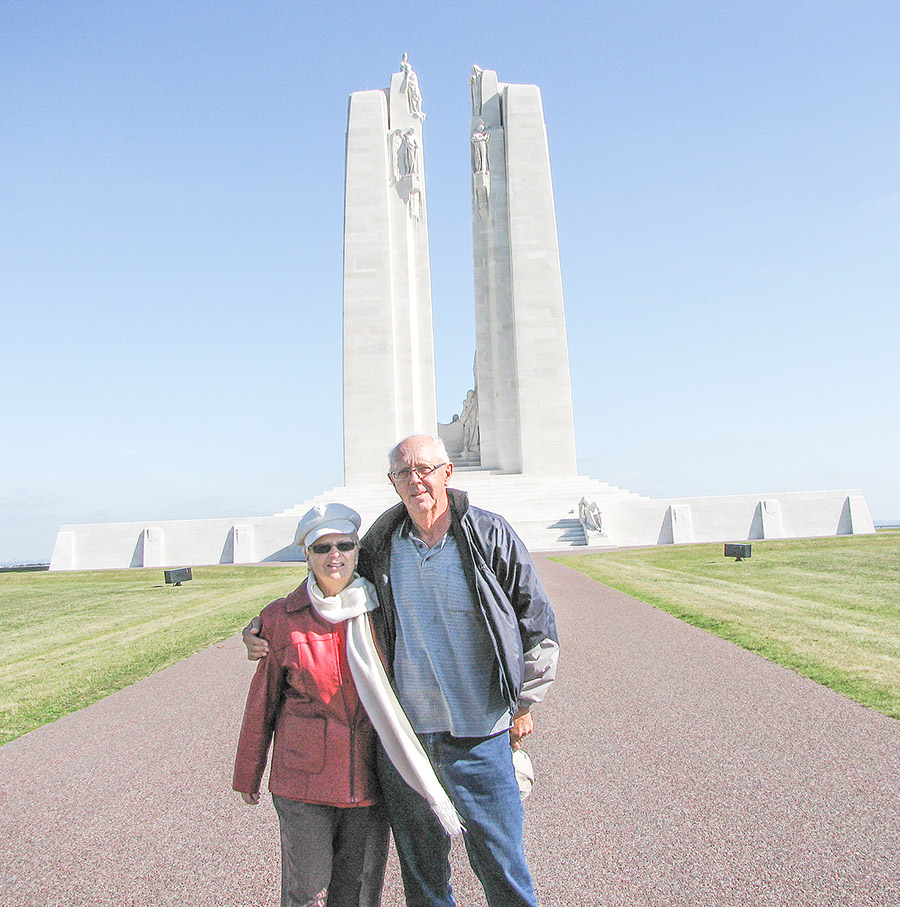 THE CANADIAN WAR MEMORIAL AT VIMY RIDGE – In 2009, Stan Hicks and his wife Mildred Richard journeyed to France to visit the Canadian War Memorial at Vimy Ridge. Hick’s uncle, Clarence Hicks, who died in the Great War in 1917, is buried nearby in Loos-en-Gohelle in a British military gravesite.
THE CANADIAN WAR MEMORIAL AT VIMY RIDGE – In 2009, Stan Hicks and his wife Mildred Richard journeyed to France to visit the Canadian War Memorial at Vimy Ridge. Hick’s uncle, Clarence Hicks, who died in the Great War in 1917, is buried nearby in Loos-en-Gohelle in a British military gravesite.
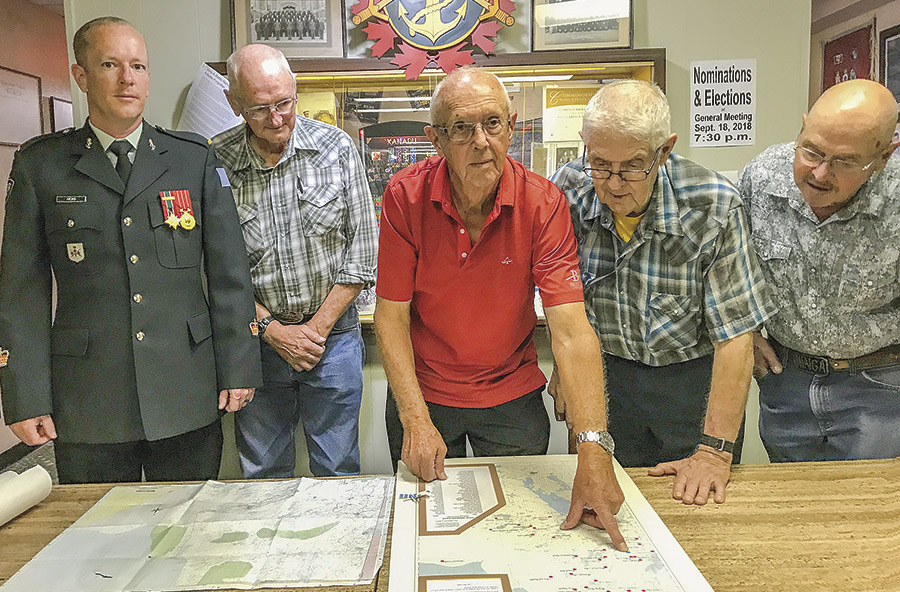 CLARENCE HICKS LAKE – ‘Clarence Hicks Lake,’ north of Flin Flon, was formally named by the Manitoba government in memory of the late Private Clarence Hicks of Ninga, who was killed in action in the trenches of France on August 15, 1917, during World War One. The marking of the map (pictured) took place on September 11, 2018, at the Royal Canadian Legion #25 in Killarney. Pictured are (from left): Tom Hicks (presently serving in Shilo); his father David Hicks; Stan Hicks; Curly Hicks; and Glen Hicks.
CLARENCE HICKS LAKE – ‘Clarence Hicks Lake,’ north of Flin Flon, was formally named by the Manitoba government in memory of the late Private Clarence Hicks of Ninga, who was killed in action in the trenches of France on August 15, 1917, during World War One. The marking of the map (pictured) took place on September 11, 2018, at the Royal Canadian Legion #25 in Killarney. Pictured are (from left): Tom Hicks (presently serving in Shilo); his father David Hicks; Stan Hicks; Curly Hicks; and Glen Hicks.
 MEMORIES OF A LOST UNCLE – Stan Hicks and wife Mildred Richard pose with photos and memorabilia of Stan’s late uncle, the rather handsome Clarence Hicks (photo held by Stan), who died during the First World War in France. A lake has now been named for his uncle, thanks to efforts by Stan Hicks, who hopes to visit Clarence Hicks Lake in person next summer.
MEMORIES OF A LOST UNCLE – Stan Hicks and wife Mildred Richard pose with photos and memorabilia of Stan’s late uncle, the rather handsome Clarence Hicks (photo held by Stan), who died during the First World War in France. A lake has now been named for his uncle, thanks to efforts by Stan Hicks, who hopes to visit Clarence Hicks Lake in person next summer.
KIM LANGEN/KILLARNEY GUIDE
LETTER TO HOME – Below is a letter from Clarence Hicks sent to his brother on March 24, 1916.
